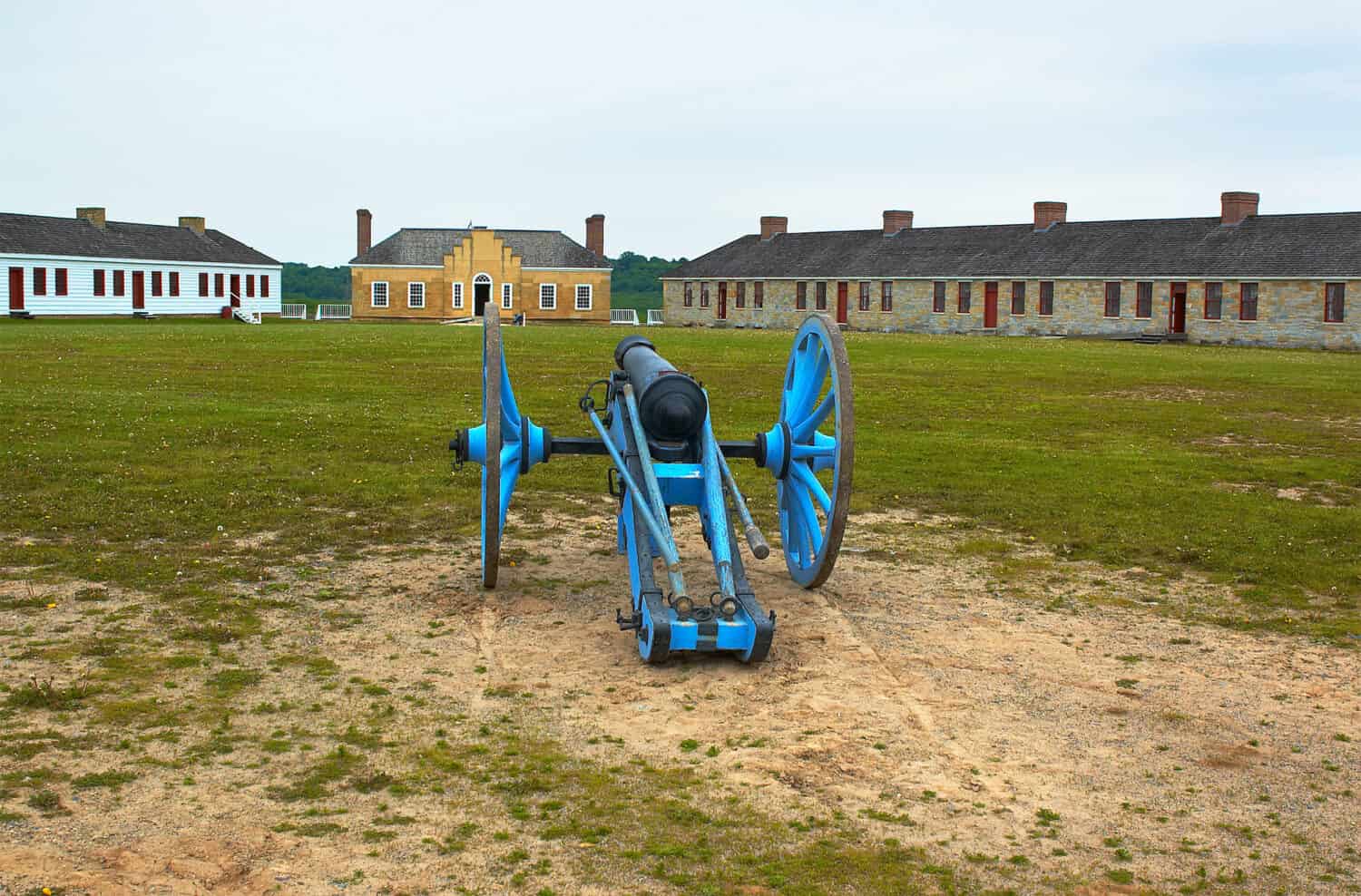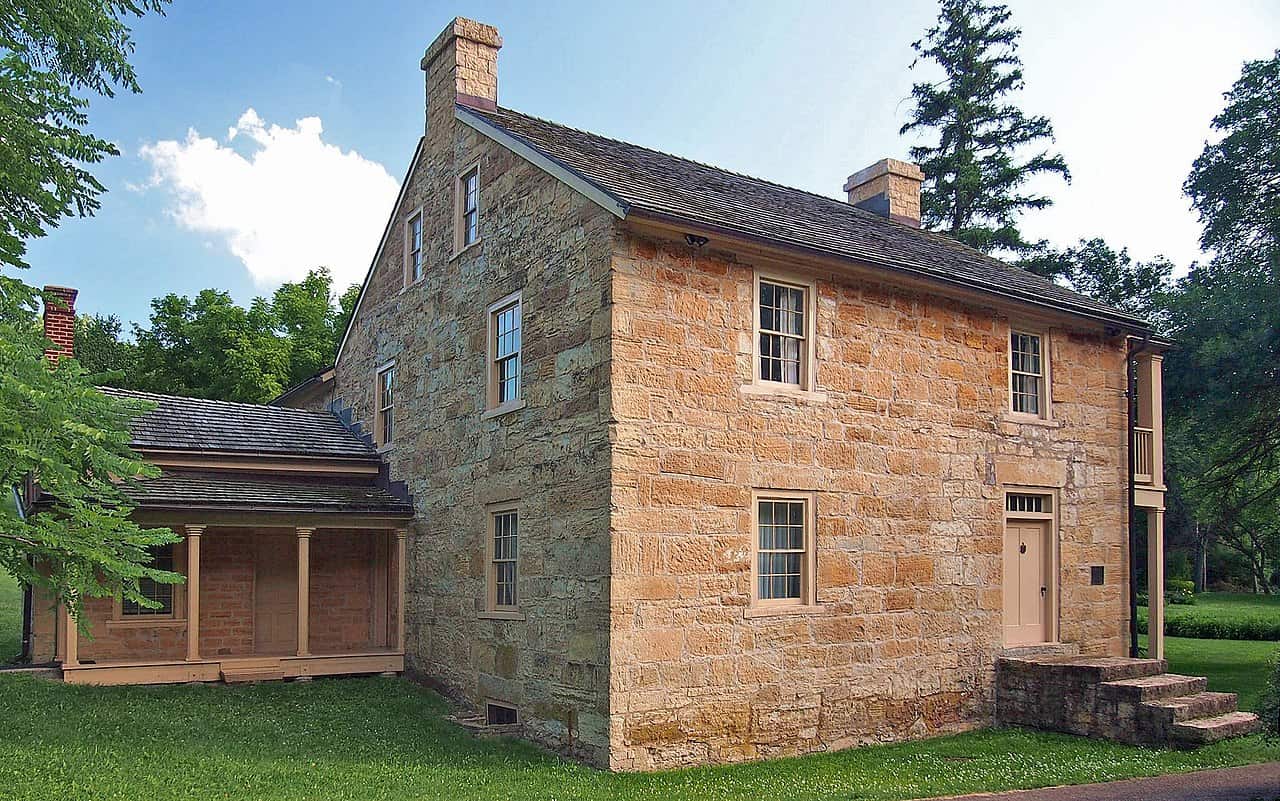The history of Minnesota has important roots in the fur trade dating back to the 19th century. Since then, the state has grown and flourished. It is known for its famous twin cities and its beautiful parks and location bordering the Great Lakes.
Minnesota is also a paradise for hockey fans and shoppers can get their fill at the Mall of America. However, the oldest house in Minnesota is over 185 years old and takes visitors back to the state’s fur trading roots.
History of Minnesota
In the 1600s, two main indigenous groups lived in Minnesota — the Dakota and the Anishinaabe. The first Europeans to arrive in the area were French fur traders who negotiated trade relationships with the indigenous people, according to the History Channel.
In 1803 the United States bought the Louisiana Purchase from France for $15 million. This land included the majority of modern-day Minnesota. By the early 1800s, Christian missionaries, soldiers, and white settlers began to appear, colonizing the area and wiping out much of the Dakota’s culture.
According to usdakotawar.org, Mendota was the first Euro-American settlement in Minnesota. The village was established as a fur trading post in 1812. Colonel Josiah Snelling completed the first American settlement, known as Fort Snelling, in 1823.
Dakota Uprising
Competition between the Dakota and Anishinaabe tribes increased due to the arrival of European settlers, who nearly wiped out the Great Plains’ buffalo population. The groups warred for years until the 1850s when they ceded most of their land to the United States.
In return, the U.S. government agreed to reserve a portion of land for indigenous people, but the government violated its promises to preserve their territory.
The U.S. government also made minimal treaty payments and failed to supply the Dakota people with food as they had promised. This led to the Dakota Uprising of 1862, during which 500 white settlers and 150 Dakota died.

Minnesota has 0.7 million acres of tribal-owned land, which belongs to the two American Indian tribes in the state—the Anishinaabe or Chippewa and the Dakota or Sioux.
©Jacob Boomsma/Shutterstock.com
Statehood
Minnesota became the 32nd state admitted to the Union in 1858. Over the years the state became well-known for a variety of industries, including forestry, health, agribusiness, and retail. In fact, the world’s first successful open heart surgery was performed by two doctors at the University of Minnesota.
Today Minnesota is known as the Land of 10,000 Lakes. The state is home to the Mall of America, the largest shopping mall in the United States, and the world’s largest continuous indoor network of pedestrian pathways. Minnesota is also a great place to enjoy hiking, camping, fishing, and other outdoor activities.
Origin of Sibley House

The oldest house in Minnesota is the Sibley House in Mendota. This stone house belonged to Henry Hastings Sibley, who was the regional manager of the American Fur Company’s “Sioux Outfit.” Sibley also became Minnesota’s first governor.
According to the Minnesota Historical Society, his home served as a private residence, business office, and hotel for individuals traveling in the area. Sibley lived as a bachelor in the home from its construction in 1835 until he married his wife Sarah Jane Steele in 1843.
After his marriage, Sibley updated the house to make it more of a family home, adding an addition to the stone house as well as a privy and an icehouse. Sibley and Steele had nine children together.
By the 1840s the fur trade began to die out in Minnesota and the American Fur Trade went bankrupt by 1842. However, Sibley decided to remain in Minnesota and pursue other endeavors. He was eventually elected the first governor of Minnesota and served from 1858-1860. During this time, Sibley transformed his personal office in the Sibley House into Minnesota’s first governor’s office.
Sibley House After 1862
By 1862, after the end of his role as governor, Sibley moved his family to a large house in St. Paul and sold his Mendota home to the parish of St. Peter’s Catholic Church.
According to the Dakota County Historical Society, Sibley House served as a convent and industrial school for girls for many years. It was then leased out to several individuals. A well-known artist named Burt Harwood used the building as a studio and art school. For a time, Sibley House also served as a storehouse and a place for the homeless.
Eventually, the St. Paul Chapter of the Daughters of the American Revolution (DAR) purchased the home in order to restore it for public opening. The group even hunted down pieces of Sibley’s original furniture in their efforts to restore the home to its original state. Today the Dakota County Historical Society, in partnership with the Minnesota Historical Society, owns and operates Sibley House.
Where is Sibley House Located on a Map?
Sibley House is located in Mendota, MN in Dakota County. The house actually sits within walking distance of the Minnesota River. The city is located in southeastern Minnesota and is only about a 20-minute drive from Minneapolis. Mendota is a very small historical city with a population of 198 according to the 2010 United States census. The name Mendota is derived from the Dakota Native American’s word for “mouth of a river,” according to usdakotawar.org.
Visit Sibley House
Today the Minnesota Historical Society operates the Sibley Historic Site. This site holds four limestone and brick buildings that are among the oldest extant structures in the state, writes the Minnesota Historical Society. Sibley House is one of these buildings. The other four are:
- Dupuis House: Hypolite Dupuis worked as a clerk for Hastings Sibley in the 19th century, according to the Minnesota Historical Society. For a time, Dupuis and his family lived in a log cabin on Sibley’s property. After the AFT went bankrupt, Dupuis built a red brick house for his family in 1845, known as Dupuis House. The brick house was expanded several times and later served as a tea house from 1928 to the 1970s.
- Faribault House: This home was originally built for a well-known fur trader and farmer named Jean Baptiste Faribault in 1839. According to the Dakota County Historical Society, Faribault House also later served as a chapel and residence for a Jesuit missionary, as well as a hotel and storage warehouse.
- Cold Store: The American Fur Company used this building to store and keep goods cold during the summer months.
Visitors can take a guided tour of the Sibley Historic Site. Tours leave the Dupuis House at 10:00 a.m., 11:00 a.m., 12:00 p.m., 1:00 p.m., 2:00 p.m., and 3:00 p.m., and last around an hour.
Other Points of Interest in Mendota Heights
The small city of Mendota is surrounded on three sides by the city of Mendota Heights. There are a number of fun and exciting things to explore in this area. Additionally, Minneapolis and St. Paul are just a short drive away.

Visit Historic Fort Snelling and Fort Snelling State Park in St. Paul, MN.
©iamanewbee/Shutterstock.com
Local Parks
There are a number of parks worth visiting near Mendota, MN. Fort Snelling State Park in Minneapolis-St. Paul offers opportunities for a variety of activities such as birdwatching, hiking, and kayaking. Kaposia Park in south St. Paul is one of the largest parks in the state, with 85 acres of nature to explore.
Big Rivers Regional Trail is a paved route used for walking, biking, and even rollerblading. The trail is located in a nature area in Mendota Heights and takes visitors on a scenic journey by the river.
Museum and Historic Sites
The Sibley Historic Site is a must-see attraction when visiting Mendota, MN. A number of other museums and attractions worth checking out are just a short drive away.
The Minneapolis Institute of Art is one of the largest art museums in the United States and houses more than 90,000 pieces. For a more whimsical experience, visit the Minneapolis Museum of Illusions. You can also check out the Purple Rain House featured in the 1984 film Purple Rain.
Thank you for reading! Have some feedback for us? Contact the AZ Animals editorial team.








